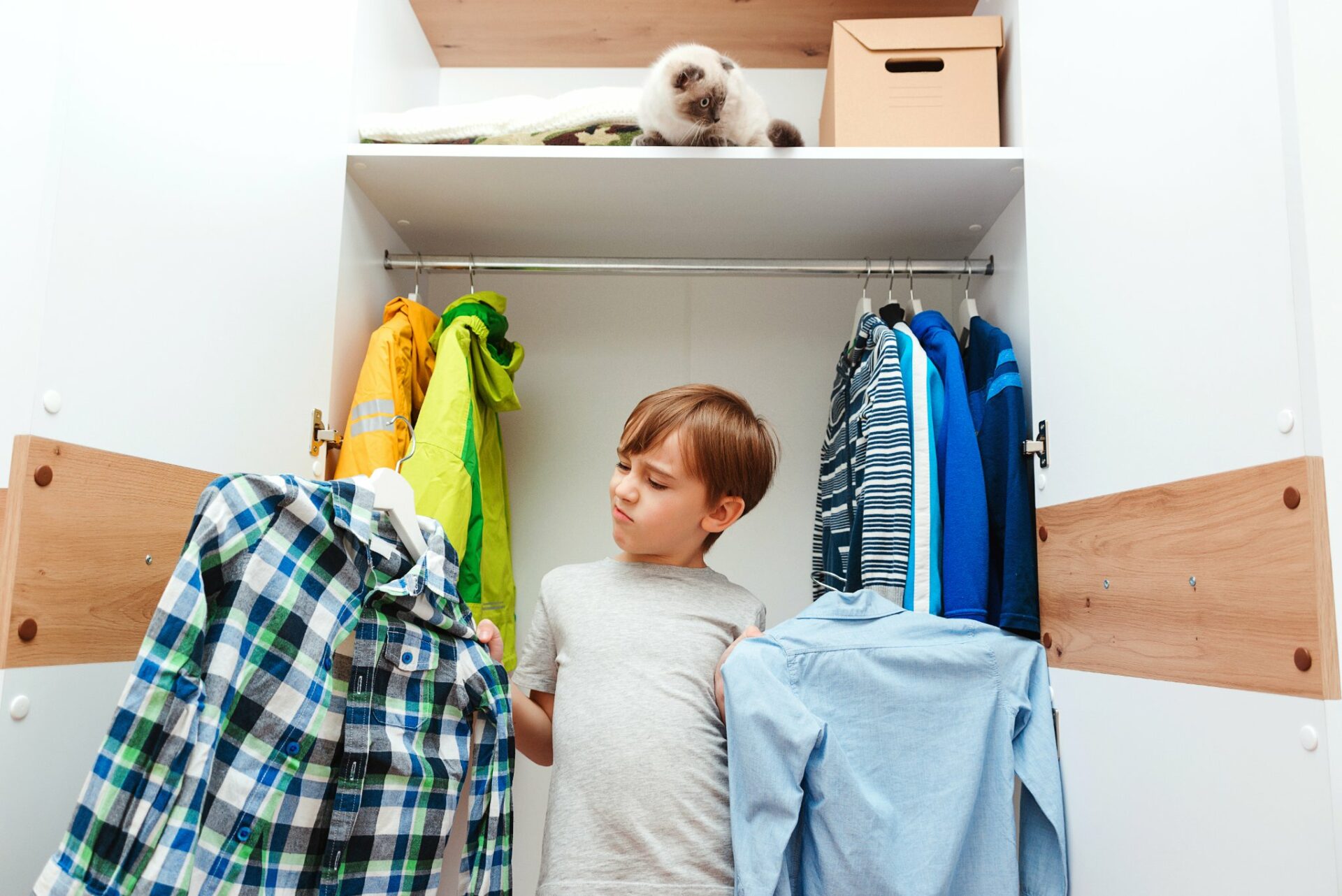Closet Full of Nothing My Kid Will Wear!
 July 3, 2022
July 3, 2022
My son likes T-shirts and gym shorts in the warmer months, hoodies and sweatpants in the colder months.
That’s it.
Attempts to try different clothing in the past occassionally led to big emotions and power struggles, but I’ve learned from him that it doesn’t have to be that way.
Daddy and Son Quality Time: Mall Addition.
We had just celebrated his sister’s birthday at a “fancy” restaurant. By fancy I mean one step above a restaurant with a drive-thru or the local bar and grill. My son wore his traditional T-shirt and shorts. Although we’ve struggled with clothing in the past, it wasn’t an issue this time (we didn’t push). There wasn’t any arguing, begging, pleading, bribing, big emotions or dysregulation (from kid or adult). So, I thought it was a good opportunity to try to expand his clothing options while learning a little more about his likes and dislikes. If there had been big emotions, it would NOT have been a good time!
We had a great talk on our way to the mall about what we were attempting and why. I shared that I would like if he had some options when we go out to “fancier” places. I explained that because he’s a teenager, he can get away with A LOT, so I’m going to be really flexible here, but let’s see if we can find something that doesn’t have a sports logo on it, or maybe move beyond mesh shorts. With that explanation, he was a willing partner in this adventure.
We set a shopping time limit, but I also told him that if we went to a few stores, we might not need the whole time. He liked that, too.
So, my expectations were explained. Now, he’s in charge. My fully formed frontal lobe was driving the car, but my son was the GPS. He was the navigator through his sensory preferences.
We went looking at and feeling shirts and pants, including rubbing fabrics on faces. I asked what each fabric felt like, and his descriptions ranged from encouraging “Oooos” to making vomit sounds. #teenager
His sensory preferences were validated throughout the journey. I shared mine, but I never imposed my preferences on him.
“Ooooo” pants got a trip to the dressing room to check for size and comfort around the waist. He was fine with buying shirts without trying them on after the face rub test.
The results:
3 stores, 2 were “new” stores for him!
5 new outfits that met both of our expectations!
0 sensory issues because he got to feel and see everything
0 arguments
0 people undermined
0 bribes (he had power, so he didn’t need the bribe)
1 fashion show to show off his new outfits he was so proud of!
Everybody won!
I learned a lot about what he likes and what he can’t stand. It also changed a little from when he was younger. Yes, our sensory preferences can change from year to year, or even day to day.
What it took to be successful?
– LOTS of communication
– A healthy dose of patience*
– Time*, undivided attention* and flexibility* from me, the adult,
but still working towards the primary expectation.
(*these are hard!)
Sharing power and mutual respect really help solve problems, build skills and develop strong relationships with people including, but not limited to, children.
This community has caregivers with kids of varying ages and ability levels. While some may be unable to replicate this experience for a variety of reasons, there are universal strategies here that can help children with sensory sensitivities related to clothing.
– Honor their sensory preferences.
– Share power. You can do this by giving them choices, either in
the store or at home when picking clothes out. Make sure they
have a say in the choices, though. You imposing the choices
may not work if they think all of the choices are terrible.
– Ask yourself if this is really a battle worth choosing. Are you
imposing your own preferences on your child? If you choose
to address this, make a plan to explore new fabrics or styles
when clothes aren’t a stressor.
Good Luck! Hope this Helps!